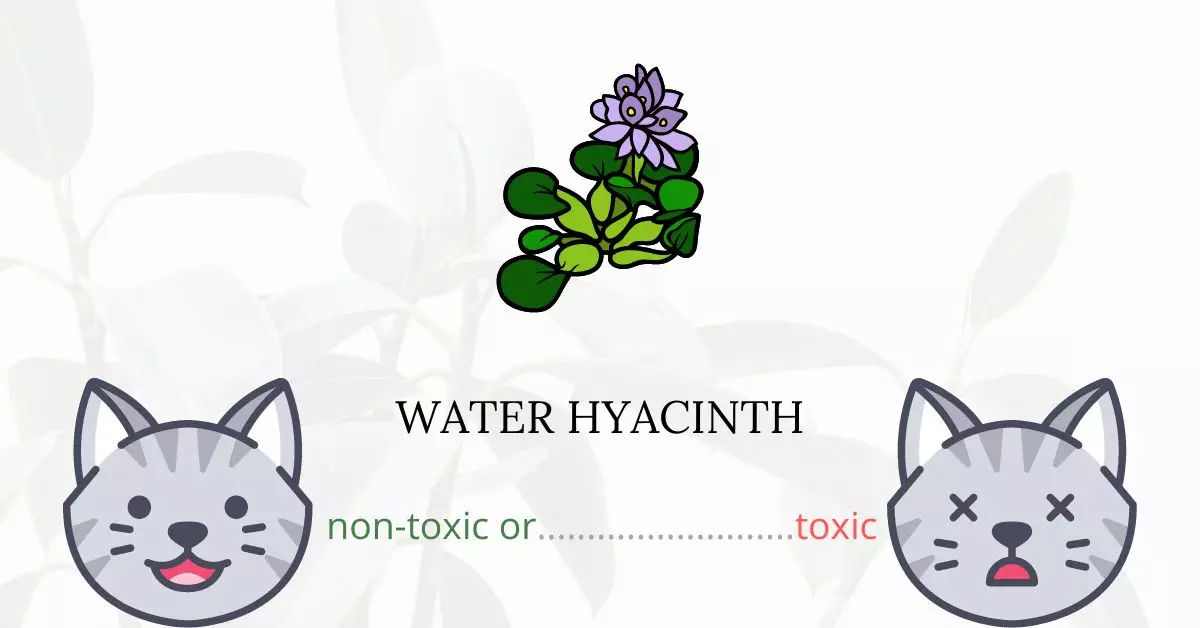Water hyacinths are not considered toxic to cats.
In collaboration with a team of experienced DVMs (doctors of veterinary medicine), we have gathered accurate and up-to-date information regarding the potential risks associated with water hyacinths and their effects on felines. Our team has also extensively researched authoritative websites such as the ASPCA and PetMD to ensure a comprehensive understanding.
While the ASPCA confirms that water hyacinths are non-toxic not only to cats but also to dogs and horses, it is worth noting that some sources suggest it can act as an irritant and may cause skin irritation in some instances.
Can Cats Eat Water Hyacinth?

While water hyacinth is considered safe for cats, it is best to take precautions and not let your felines nibble on this plant. If your cat is highly sensitive, the plant may trigger allergic reactions. Allergic reactions may be different depending on each cat so make sure to visit your vet.
Also, plants are generally not good for cat consumption. Because cats are carnivorous species, their bodies cannot process plant materials the same way herbivores and omnivores can. If a cat has eaten too much plant material, he is highly likely to suffer from indigestion.
What is Water Hyacinth?

Water hyacinth is a South American aquatic plant. Water hyacinth, scientifically known as Pontederia crassipes and formerly Eichhornia crassipes, has naturalized throughout the world and is considered invasive in some areas.
Water hyacinths can reach a height of 1 meter (3 feet) above the water’s surface thanks to their broad, thick, glossy, ovate leaves. The leaves are 10-20 cm (4-8 inches) across on a stem that floats above the water surface thanks to buoyant bulb-like nodules at its base. Their stalks are long, spongy, and bulbous. They also have purple-black feathery, freely hanging roots.
Because of its striking flowers, it has been commonly cultivated as a water ornamental all over the world. It has spread with incredible speed wherever it has encountered appropriate environmental conditions, forming vast monotypic stands in lakes, rivers, and rice paddy fields. Then it has a negative impact on human activities (fishing, water transportation) and biodiversity.
It is impossible to eradicate, and only an integrated management strategy that includes biological control can therefore provide a long-term solution to this invasive species.
Keeping Cats Away From Water Hyacinth

Water hyacinths are common near bodies of water. If you live in an area where water hyacinths thrive, you should limit your cat’s outdoor activities. Keep your feline indoors and do everything you can to keep them entertained. Bored cats are more likely to leave the house and nibble on anything that piques their interest.
If your cats love digging, you can use rocks to deter your cat from digging up the soil of your houseplants. You may try covering the soil with smooth stones. It is preferable to use larger than one inch in size. Avoid using smaller rocks because your cat may mistake them for litter and use the planter as a litter box.
Plants to Avoid For Your Cats
If you are a cat owner and unsure if the plants growing in your yard are harmful to your cats, check out this list of toxic plants for cats. You can also check our list of non-toxic plants for cats.





